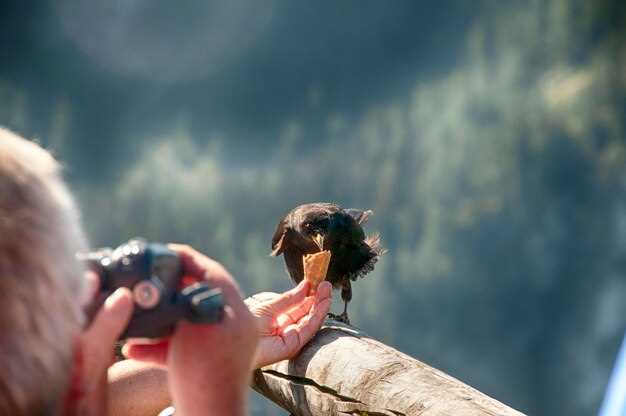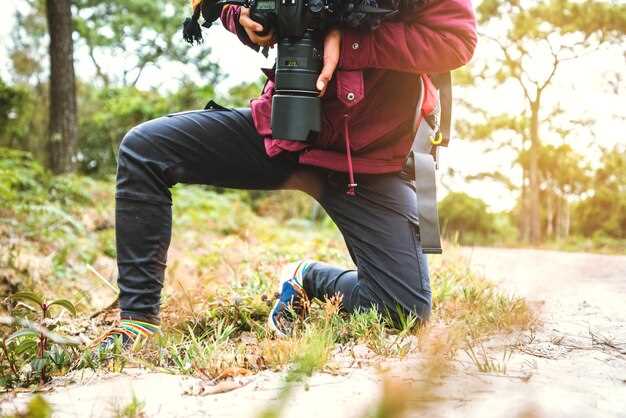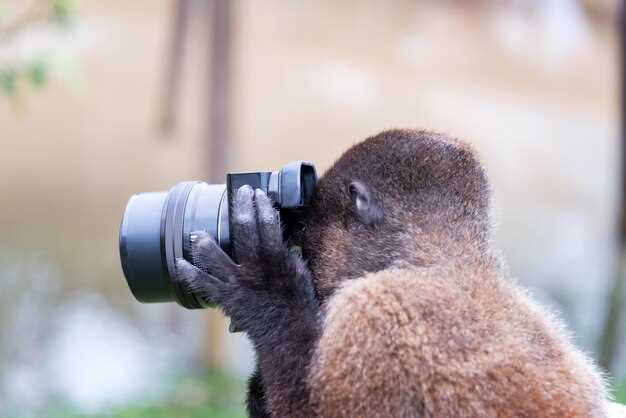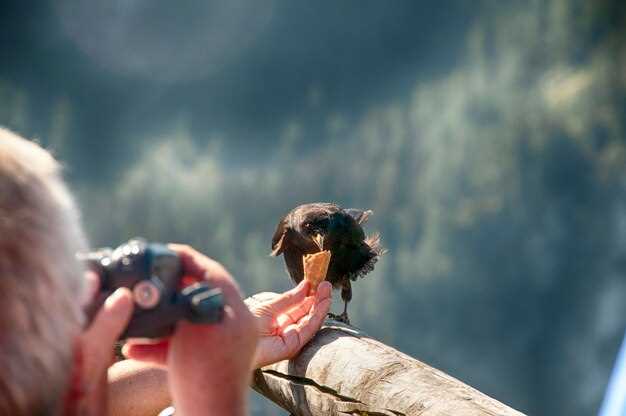Begin your search for the perfect wildlife photography camera by evaluating the sensor size. A camera with a larger sensor often enables better low-light performance and greater detail in your images. For action-packed wildlife scenes, a full-frame sensor can capture expansive landscapes and intricate creature textures simultaneously. Although more compact, APS-C sensors still offer remarkable image quality and are ideal for those who prioritize portability.
Next, consider the autofocus capabilities of your camera. Successful wildlife photography frequently relies on capturing subjects in motion. Look into models that feature advanced autofocus systems with multiple focus points spread across the sensor. This technical advantage permits precise focus on quickly moving animals, whether they’re sprinting across fields or soaring through skies.
Another critical feature is the camera’s shooting speed and buffer capacity. For wildlife enthusiasts, a fast shutter speed is indispensable. Cameras capable of high frames per second shooting ensure you don’t miss any fleeting moments. Moreover, a robust buffer allows for continuous shooting without slowdowns, catering to the need for capturing bursts of action.
Evaluating Camera Features for Wildlife Photography

Choose a camera with a fast and accurate autofocus system to capture animals in motion. Wildlife rarely poses for photos, so speed and precision in focusing are critical.
- Autofocus Points: Opt for cameras with a high number of autofocus points, preferably ones that cover a large portion of the frame. This helps track unpredictable movements effectively.
- Continuous Shooting Speed: Look for a camera that offers a high FPS (frames per second) rate. A rate of at least 10 FPS can significantly improve your chances of capturing the perfect moment.
- Sensor Size and Resolution: Full-frame sensors are ideal for low-light situations often encountered in wildlife environments. A higher resolution sensor allows for cropping without losing image quality, which is helpful when shooting distant subjects.
- ISO Range: Select a camera with an extensive ISO range to handle different lighting conditions. A wide range helps maintain image quality in low light or when using fast shutter speeds.
- Weather Sealing: Ensure the camera body is weather-sealed for protection against moisture, dust, and harsh conditions often faced in the outdoors.
- Battery Life: A robust battery life is essential for long outdoor sessions. Consider cameras that allow battery grip attachments for extended shooting.
Prioritize these features based on your typical shooting environment and subject preferences. By doing so, you’ll be better equipped for successful wildlife captures.
Understanding Sensor Size and Its Impact on Wildlife Shots
Choose a camera with a larger sensor for better wildlife photography. Larger sensors typically offer superior light sensitivity, crucial for capturing wildlife in varied lighting conditions. With a larger sensor, you can achieve improved image quality, resulting in sharper, more detailed images. This is particularly useful in low-light environments, such as early morning or late afternoon, when many animals are most active.
Also, consider the crop factor associated with sensor size. A smaller sensor, like an APS-C, effectively increases the focal length of your lens, bringing distant subjects closer. This can be hugely beneficial for photographing wildlife without disturbing their natural behavior. However, full-frame sensors provide a broader field of view, which can be advantageous when composing expansive landscapes that include wildlife.
Weigh your priorities. If shooting in low light and capturing fine details is paramount, a full-frame sensor may be ideal. If you often shoot distant animals and require increased reach, a crop sensor may suit your needs better. Invest in a camera that balances these aspects based on your wildlife photography goals.
Frame Rate: Capturing Fast-Moving Animals with Precision
For wildlife photography, a higher frame rate is key. Choose a camera that offers at least 10 frames per second (fps) to successfully capture fast-moving animals. This ensures you don’t miss fleeting moments, like birds in flight or predators chasing prey.
Mirrorless cameras often provide better frame rates than DSLRs. For instance, the Sony A9 II and the Canon EOS R5 can shoot at 20 fps. This capability is invaluable for capturing split-second movements with clarity and focus.
Consider buffer size along with frame rate. A large buffer allows more continuous shots in high-speed bursts before slowing down. Cameras with robust processors, like the Canon 1DX Mark III, excel in this regard by allowing an uninterrupted shooting experience even at high frame rates.
Another factor is the autofocus system. A fast and accurate autofocus complements high frame rates and ensures the subject stays sharp, despite its rapid movement. Cameras with advanced eye-tracking or animal-tracking focus modes, such as the Sony Alpha series, make it easier to maintain focus on the subject, regardless of its speed.
Don’t overlook the importance of shutter speed. A higher frame rate is most effective when matched with a suitable shutter speed, allowing you to freeze motion effectively. An ideal combination enhances image quality even during rapid action sequences.
Ultimately, balancing frame rate, buffer size, autofocus capability, and shutter speed is critical. A camera that integrates these elements well will consistently deliver stunning wildlife shots bursting with detail. Choose wisely based on what you frequently capture in the wild, ensuring your camera is equipped for quick scenarios.
Autofocus Systems: Importance of Speed and Accuracy in the Wild
Select a camera with a fast and accurate autofocus (AF) system designed for tracking moving subjects. Wildlife photography demands precision, as unpredictable animal movements require quick adjustments. Consider the following features when evaluating autofocus capabilities:
- Phase Detection Autofocus (PDAF): This technology offers faster focusing by measuring the convergence of two beams of light. Ideal for shooting fast-moving subjects, PDAF is often found in DSLR and mirrorless cameras.
- Advanced Subject Tracking: Modern cameras with AI-driven algorithms can recognize and track animals’ eyes or faces, ensuring sharper images even in dynamic environments. This feature significantly improves the success rate of obtaining tack-sharp results.
- Focus Area Points: Opt for a camera with a high number of focus points, allowing for greater control and flexibility when composing shots. More focus points enable precise focus lock on subjects situated off-center in your frame.
- Low-Light Performance: Wildlife photographers often shoot during dawn or dusk when light conditions are challenging. A reliable autofocus system must excel in low-light conditions, retaining both speed and accuracy.
- Continuous Autofocus (AF-C) Mode: Ensure the camera has a robust continuous autofocus mode that maintains focus on moving wildlife in burst shooting scenarios. This mode is indispensable for capturing action sequences seamlessly.
Invest in a camera that excels in these autofocus features to maximize your wildlife photography success and capture stunning images with confidence and precision.
Weather Sealing and Ruggedness: Ensuring Durability in Harsh Conditions
Opt for a camera with robust weather sealing. This feature guards against rain, dust, and humidity, keeping your equipment operational in diverse environments. Look for models with rubber gaskets at critical points like buttons and doors to provide extra protection.
Examine the build quality of the camera. Magnesium alloy bodies are preferred as they offer lightweight yet durable performance. This construction not only withstands bumps and knocks but also helps in temperature regulation, reducing potential failures caused by extreme heat or cold.
Consider cameras tested under specific environmental conditions. Manufacturers often indicate temperature, dust, and water resistance ratings. Check for an IP (Ingress Protection) rating; a rating of IP65 or higher is desirable for wildlife photography.
Don’t compromise on lens durability. Choose lenses with weather-sealed construction. A lens hood can further shield the lens from rain and direct sunlight, enhancing its longevity.
Finally, invest in a sturdy camera bag with water-resistant features. It will serve as an additional layer of protection, ensuring your gear remains safe during unexpected weather changes.
Battery Life Considerations for Extended Wildlife Photography Sessions
Select a camera with a high-capacity battery that can endure long sessions without requiring constant changes. Look for models offering a minimum of 600 shots per charge as per CIPA ratings. Consider carrying multiple spare batteries and a portable charger to ensure uninterrupted shooting, especially if you are in remote areas.
Switch to power-saving modes to extend battery life. Disable unnecessary features like GPS, Wi-Fi, or continuous autofocus when not needed. Lower the LCD brightness and limit the time you spend reviewing shots on the screen.
Plan your session around the battery’s performance. Observe the following strategies:
| Tip | Description |
|---|---|
| Extra Batteries | Always carry at least two extra fully charged batteries to avoid interruptions. |
| Portable Charger | Invest in a high-capacity power bank to recharge batteries on the go. |
| Power-Saving Mode | Activate settings that conserve battery life, such as sleep mode and minimal screen usage. |
| Battery Grip | Use a battery grip accessory for more power redundancy and extended usage. |
| Battery Maintenance | Store batteries at the recommended temperature and avoid leaving them fully charged when storing long-term. |
Adhering to these practices maximizes shooting duration and enhances field productivity, ensuring you capture wildlife moments without unnecessary interruptions.
Selecting the Right Wildlife Photography Lens

Choose a lens with a long focal length to capture distant wildlife without disturbing their natural behavior. A focal range of 100-400mm is ideal, offering versatility for different situations. Prioritize lenses with a wide maximum aperture, such as f/2.8 or f/4, to perform better in low light conditions, common during early morning or late afternoon shoots.
Image stabilization is essential for minimizing blur, especially when shooting handheld. Ensure the lens is equipped with this feature to improve sharpness. Autofocus speed is another critical factor; fast and accurate autofocus helps capture fast-moving subjects with precision. Consider lenses with a silent motor for quieter operations, reducing the chance of scaring wildlife away.
Assess the lens’s build quality, opting for weather-sealed models to withstand harsh environments. Lightweight lenses enhance mobility, crucial for dynamic wildlife photography. However, balance weight with performance; heavier lenses often feature better optics. Here’s a comparison of popular lenses:
| Lens Model | Focal Length | Max Aperture | Image Stabilization | Weight |
|---|---|---|---|---|
| Canon EF 100-400mm f/4.5-5.6L IS II USM | 100-400mm | f/4.5-5.6 | Yes | 1.57 kg |
| Nikon AF-S NIKKOR 200-500mm f/5.6E ED VR | 200-500mm | f/5.6 | Yes | 2.3 kg |
| Sony FE 200-600mm f/5.6-6.3 G OSS | 200-600mm | f/5.6-6.3 | Yes | 2.1 kg |
Evaluate budget considerations against desired features. Third-party brands can offer excellent performance at lower costs. Test the lens in-store or rent before purchasing to ensure it meets your personal criteria. Happy shooting!
Key Lens Specifications for Wildlife Photography: Focal Length and Aperture
Choose a lens with a focal length of at least 300mm for capturing wildlife from a distance, ensuring safety and minimizing disturbance to the animals. Zoom lenses, like a 100-400mm, offer flexibility to adjust the composition without changing your position.
- Focal Length:
- 300mm and above: Ideal for photographing animals from a safe distance.
- Zoom lenses (e.g., 100-400mm): Provide versatility to frame different subjects without needing to switch lenses.
- Aperture:
- Wide Aperture (f/2.8 – f/5.6): Allows for faster shutter speeds, crucial for freezing motion and capturing sharp images even in low light conditions.
- Shallow Depth of Field: A wider aperture helps isolate the subject from the background, adding emphasis to the animal and enhancing portrait-like qualities in your shots.
Combine a long focal length with a wide aperture to maximize light capture and subject isolation. This pairing improves performance in variable lighting and ensures versatility, making it easier to adapt to dynamic shooting conditions.
Consider telephoto lenses with image stabilization to reduce camera shake, particularly when shooting handheld or in challenging environments. This feature is key for maintaining image sharpness and clarity, enhancing the quality of your wildlife photography.
Image Stabilization: Enhancing Clarity in Dynamic Environments
Opt for cameras equipped with advanced image stabilization (IS) features to capture clear shots in dynamic settings. Explore options like in-body stabilization (IBIS) which compensates for camera shake, providing precision without requiring a tripod. Lenses with optical stabilization further enhance stability, especially in long-range photography.
Consider cameras with dual IS systems, synchronizing both in-body and lens stabilization for optimal results. This combination proves invaluable in low-light conditions, where slower shutter speeds are necessary. Mirrorless models often offer more sophisticated stabilization technology, making them a desirable choice for wildlife enthusiasts.
Experiment with different IS modes to match the movement you’re trying to capture. Switching to ‘Active Mode’ may help when tracking rapid movements like flying birds. For panning shots, select ‘Panning Mode’, maintaining sharpness on the subject while achieving motion blur in the background. Practicing with these settings will refine your ability to create sharp and stunning wildlife images.
Understanding Lens Compatibility with Various Camera Bodies
Select the camera body that matches your favorite lens brand for wildlife photography. Know the mount type of your camera and ensure it fits the lens you plan to use. Canon’s EF and RF mounts cater to different models; EF is for DSLRs, whereas RF suits mirrorless cameras. Nikon offers F-mount for DSLRs and Z-mount for mirrorless options. Sony users should focus on E-mount lenses, fully compatible with their mirrorless cameras. If you’re considering third-party lenses, brands like Sigma and Tamron produce variants for various mounts, expanding your options significantly.
Verify that your lens can accommodate full-frame or crop sensor bodies, as the compatibility directly impacts image quality and field of view. Use adapter rings to bridge gaps between older lenses and modern camera bodies. These adapters broaden your choice but ensure autofocus and metering functionality remain unhindered. By thoroughly understanding lens compatibility, you optimize quality and flexibility in wildlife photography.
Video:

The Ultimate Guide to Choosing the Best Camera for Wildlife Photography
The Ultimate Guide to Choosing the Best Camera for Wildlife Photography
Q&A:

What are the most important features to consider when selecting a wildlife photography camera?
When selecting a camera for wildlife photography, it’s crucial to look for a few key features. First, consider the autofocus system, as wildlife often moves quickly, and a fast, accurate autofocus is essential. Second, look for a camera with a high frame rate for capturing rapid sequences of movement. Third, ensure that the camera has a robust build and weather sealing, as shooting in the wild often exposes equipment to harsh conditions. Finally, a good sensor with a wide ISO range will help capture high-quality images in varying light.
Is a DSLR or mirrorless camera better for wildlife photography, and why?
This largely depends on personal preference and specific requirements. DSLRs generally offer longer battery life and a wide range of lenses. However, mirrorless cameras are often lighter and more compact, with advanced autofocus systems. They also provide electronic viewfinders that can give real-time previews of exposure, which can be advantageous in unpredictable lighting conditions often encountered in wildlife photography.
How do megapixels impact wildlife photography, and should I prioritize them in my camera selection?
Megapixels define the resolution of the images, allowing more detail and larger prints. Higher megapixel counts can be beneficial when cropping images to get closer to faraway subjects. However, they are not the only factor to consider. High ISO performance and the quality of the sensor are equally important for achieving good image quality, especially in low-light conditions common in wildlife photography.
Are there specific lenses that are best suited for wildlife photography?
Yes, a telephoto lens is generally the best choice for wildlife photography as it allows you to capture animals from a distance without disturbing them. Lenses with focal lengths of 300mm or more are recommended. You may also consider a zoom lens for versatility in framing your shots. Additionally, lenses with image stabilization will help ensure sharp images, especially when shooting handheld.
